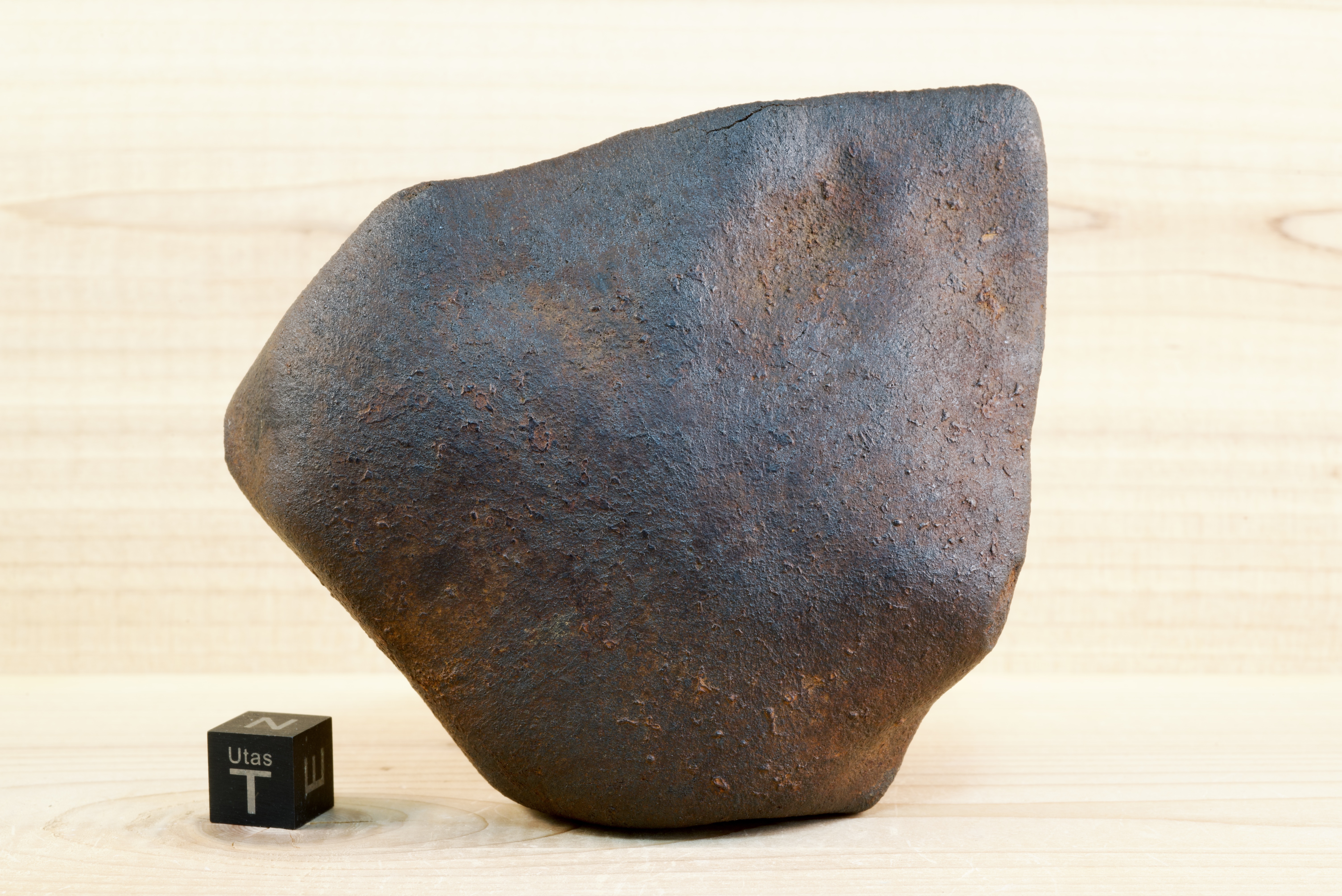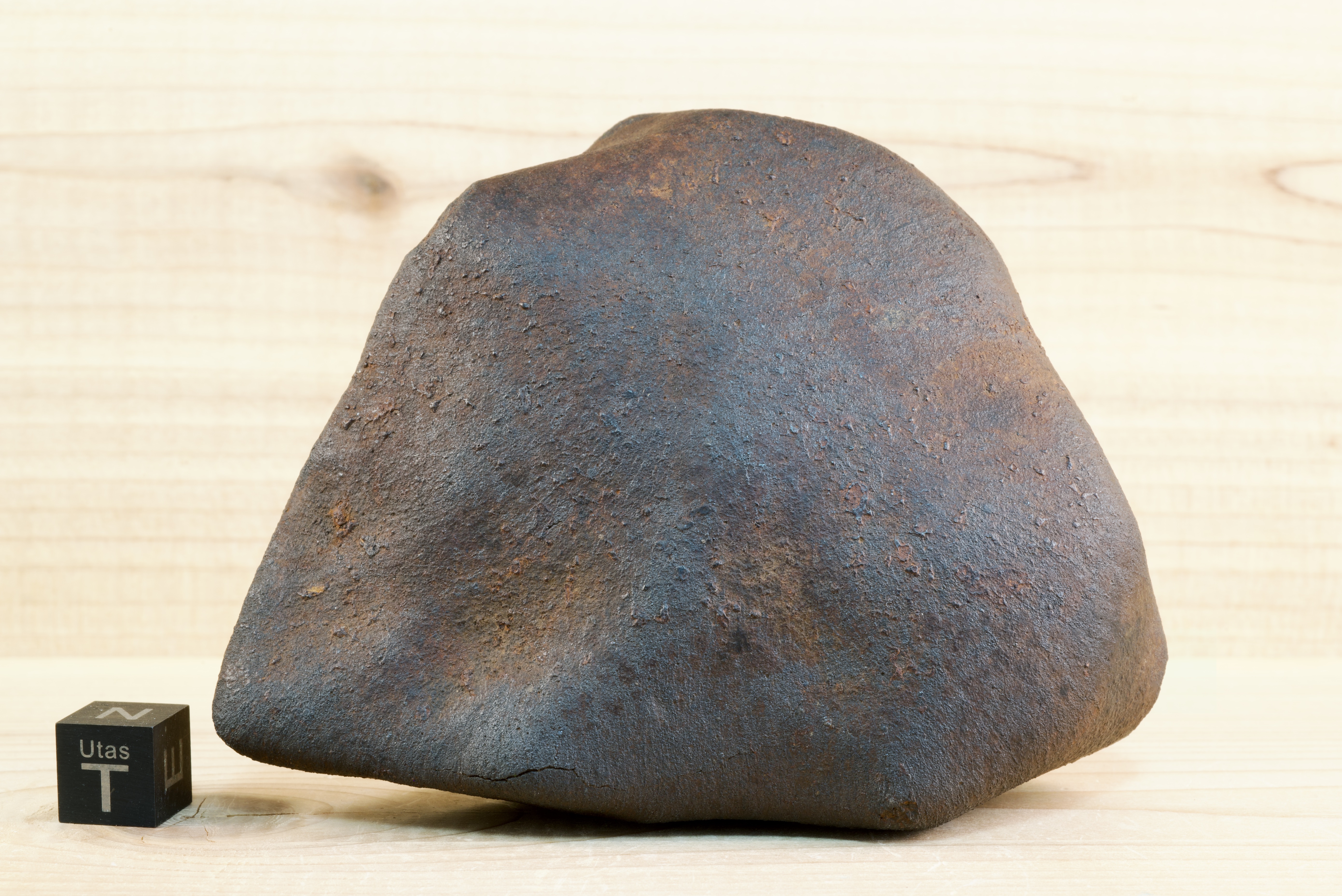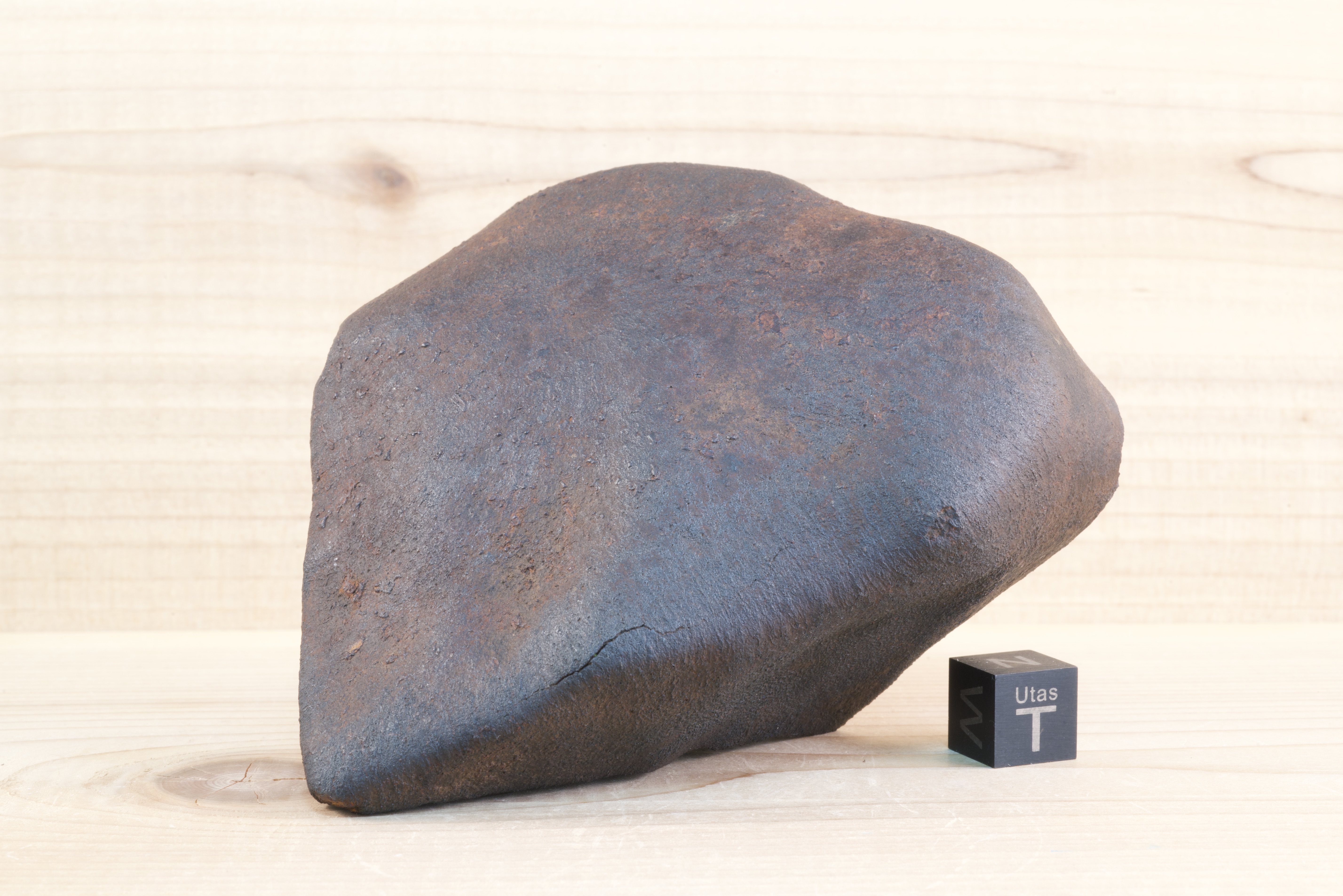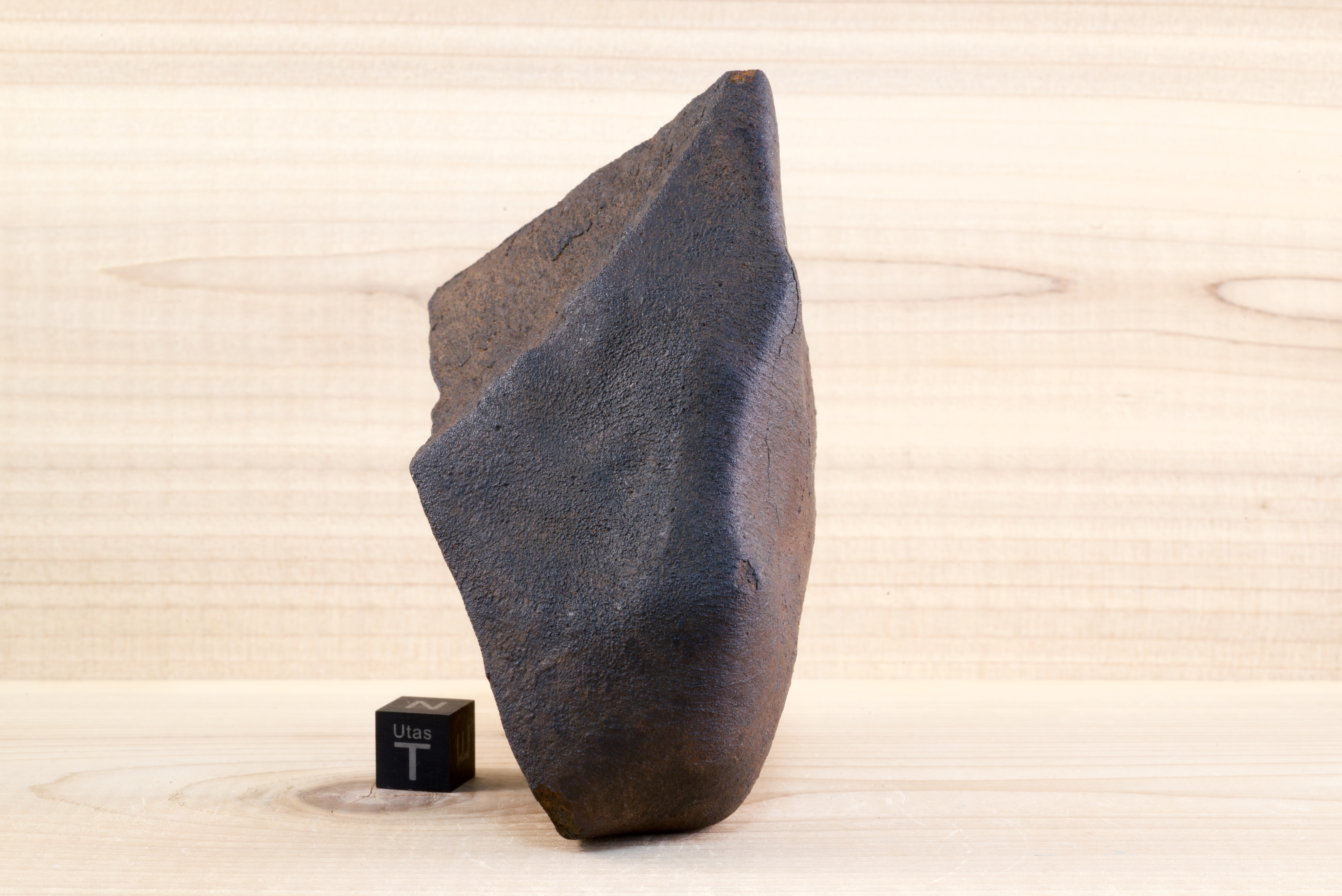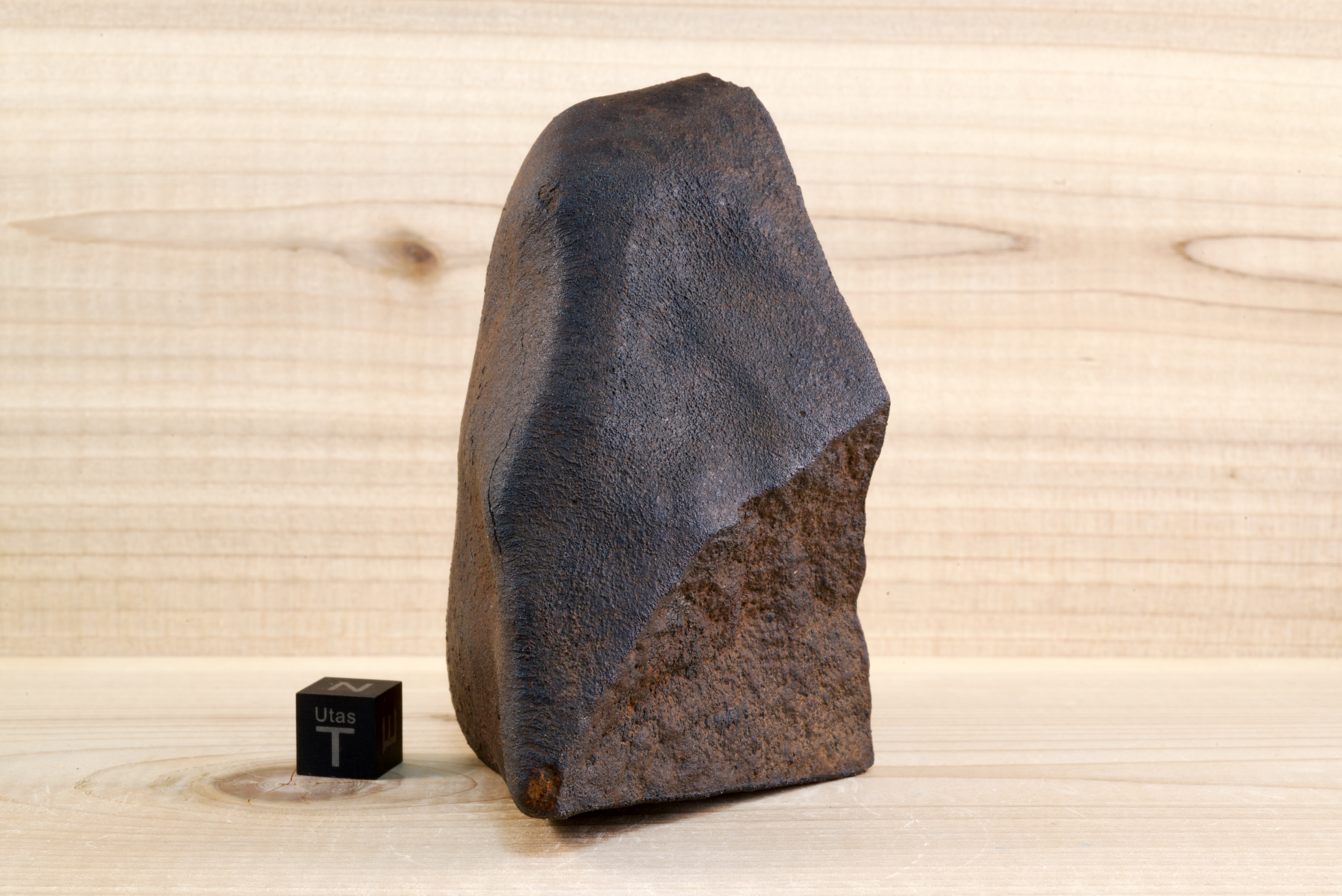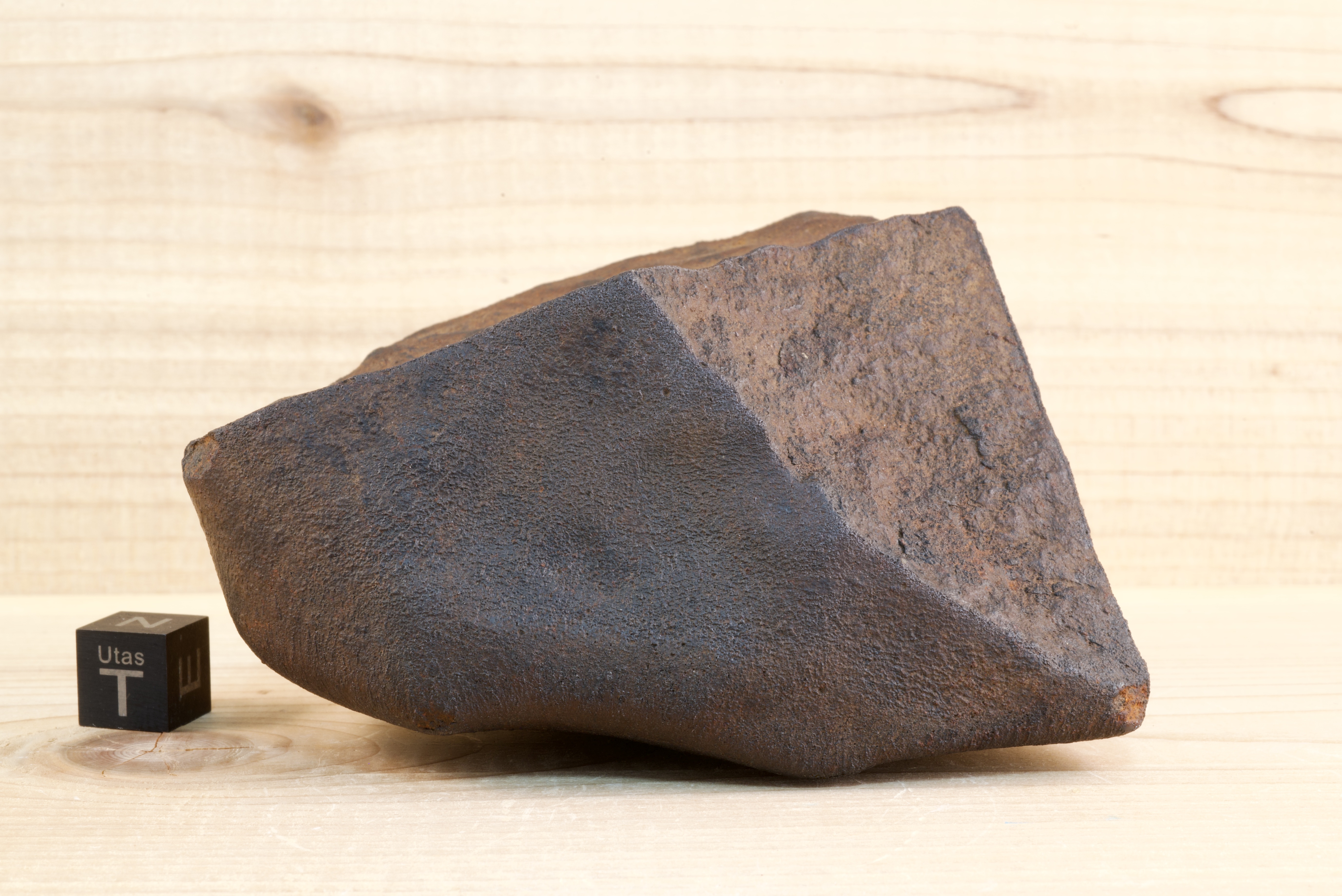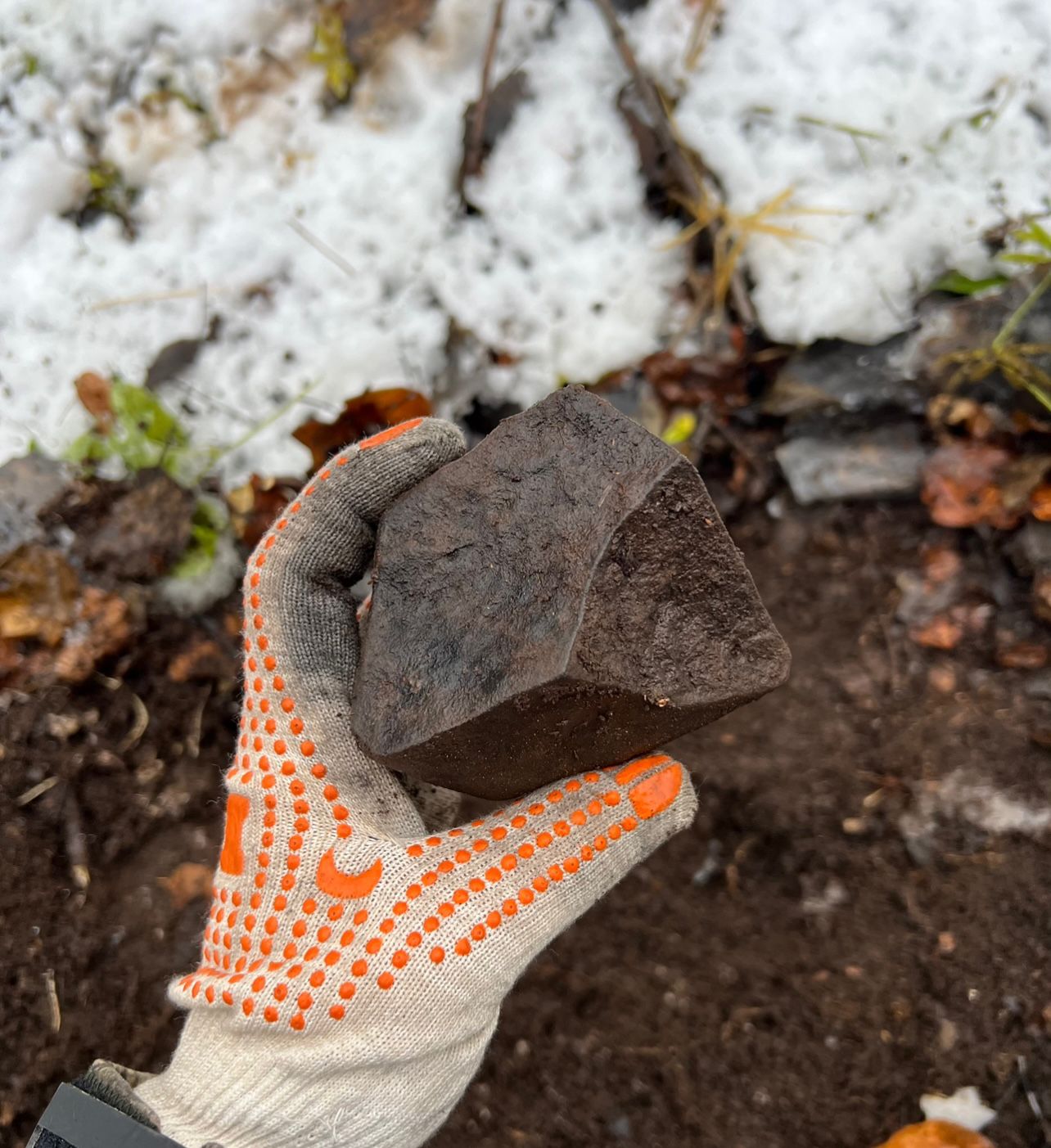Kainsaz, CO3.2
Not much contemporary information was published about this historic Russian fall. From Meteor News – News from the Soviet Union Concerning Meteoric Research (1938) Journal of the Royal Astronomical Society of Canada, Vol. 33, p.51:
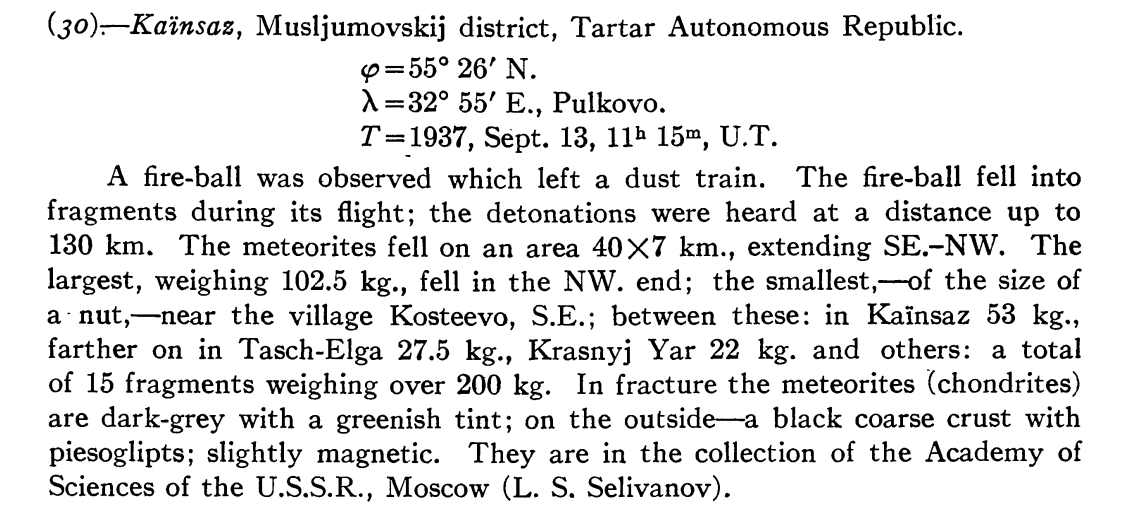 Kainsaz was a truly massive event – one of the largest carbonaceous chondrite witnessed falls ever recorded. Unfortunately, the strewnfield appears to be long and fairly sparse, making hunting challenging. In recent years, hunters have reported finding, on average, between zero and two stones per month in the field, by metal detecting.
Kainsaz was a truly massive event – one of the largest carbonaceous chondrite witnessed falls ever recorded. Unfortunately, the strewnfield appears to be long and fairly sparse, making hunting challenging. In recent years, hunters have reported finding, on average, between zero and two stones per month in the field, by metal detecting.
This oriented stone was found relatively clean and well-preserved. Unlike many of the recent finds from the field, it has not been sandblasted or otherwise cleaned.
